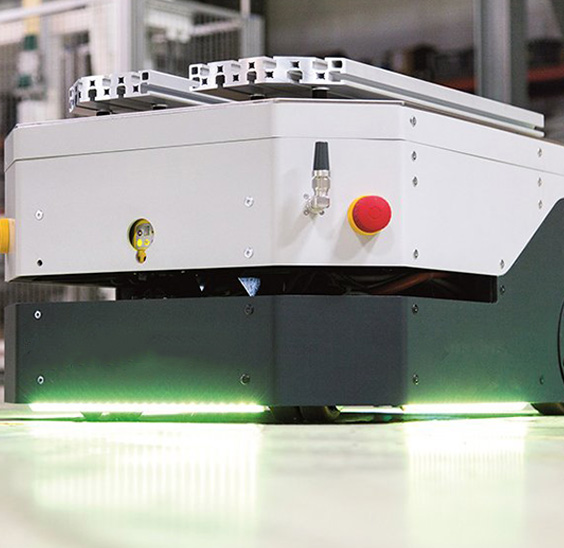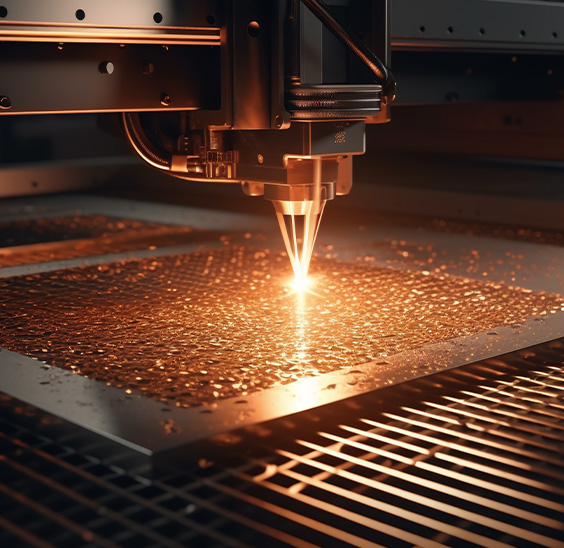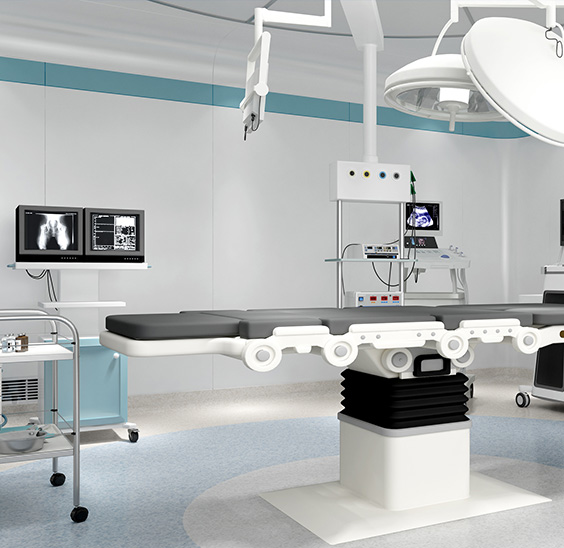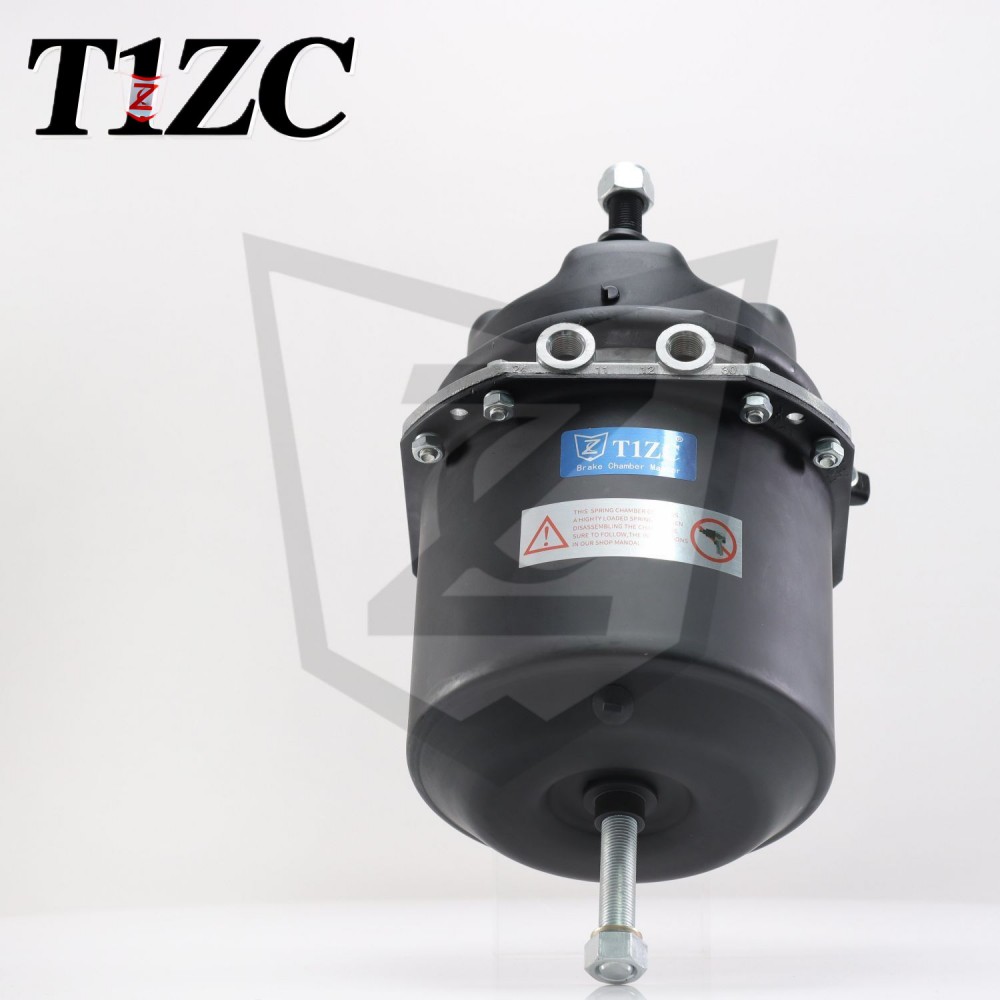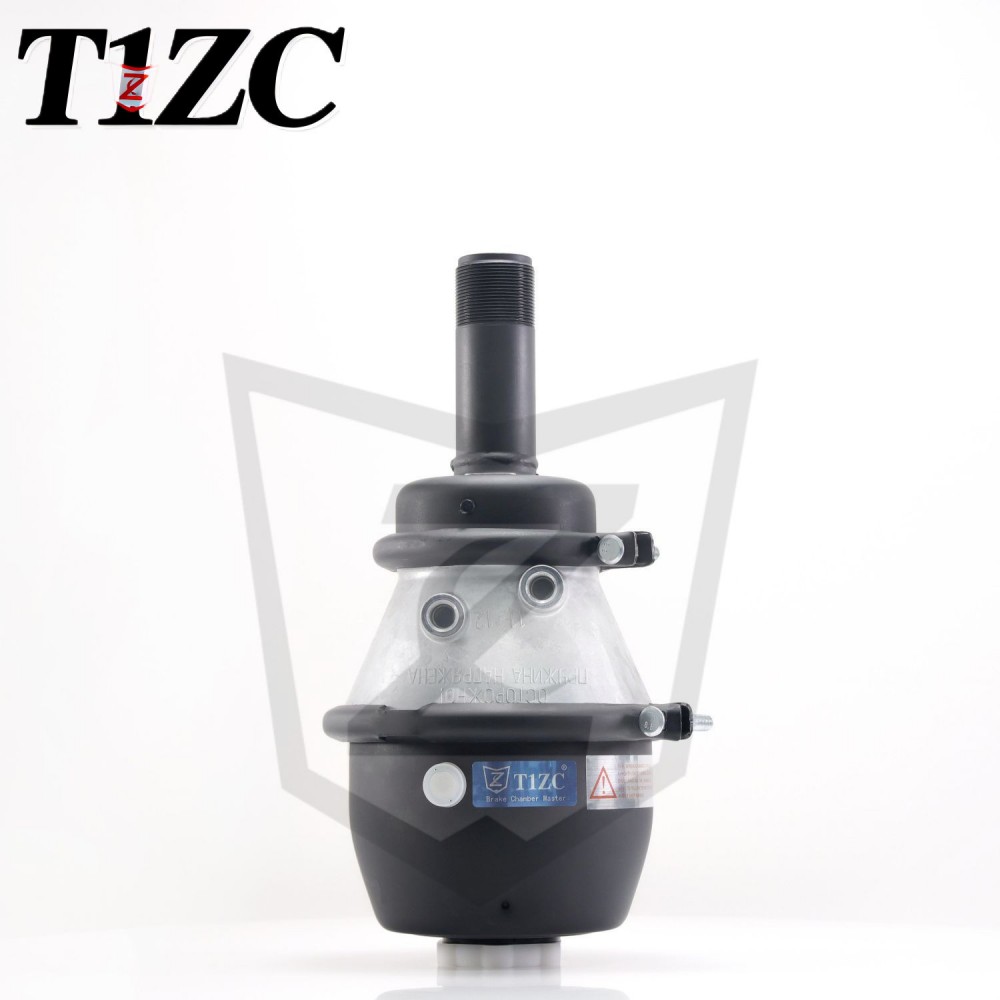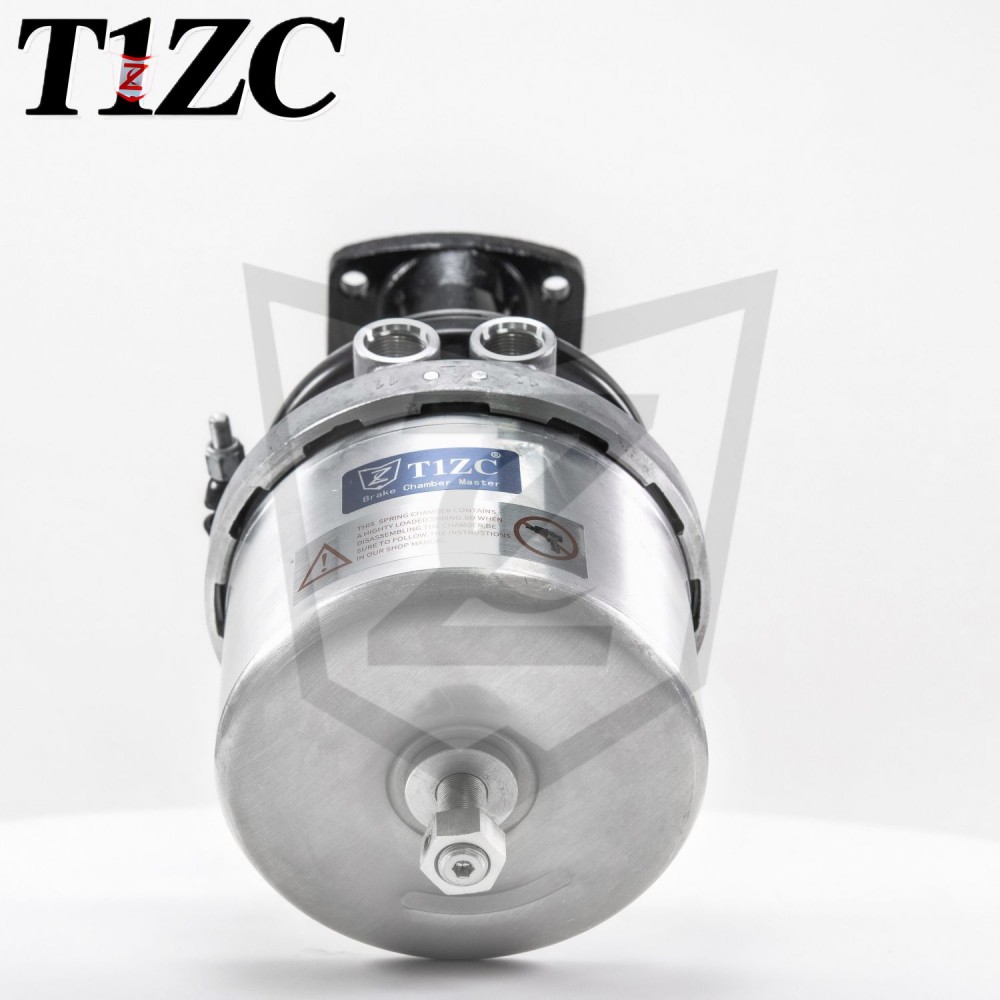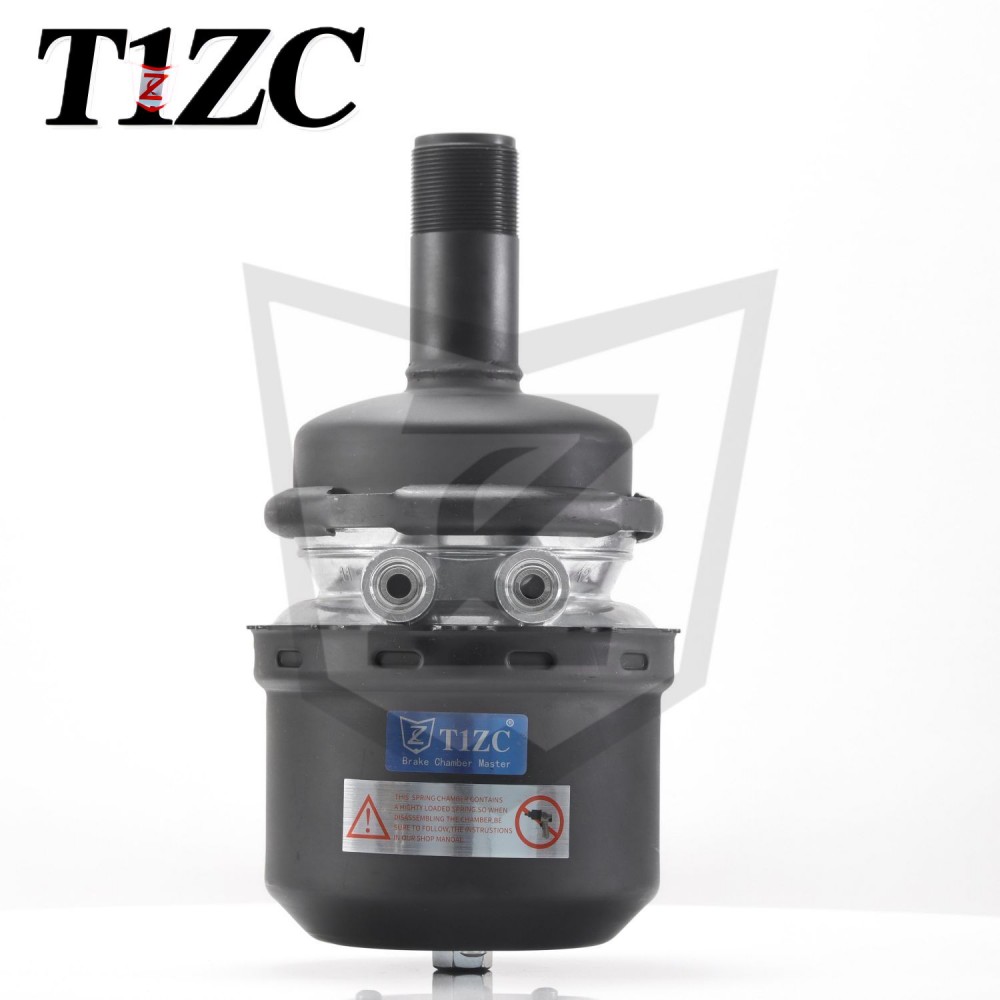What is a Disc Brake Chamber?
In the realm of commercial vehicle safety, few components are as critical as the braking system. While disc brakes themselves are often the visible element, the unsung hero providing the necessary actuating force is frequently the disc brake chamber.
Definition and Primary Function
A Disc Brake Chamber is a sealed, cylindrical pneumatic device that converts compressed air pressure from the vehicle's air brake system into mechanical force. This force is then used to actuate the brake caliper on a disc brake system, clamping the brake pads against the rotor to create the friction necessary to slow or stop the vehicle.
Its primary role is to serve as the critical link between the driver's command (pressing the brake pedal) and the physical application of the brakes at the wheel. It is a key component in modern air-braked systems, known for their reliability and effectiveness in heavy-duty applications.
How a Disc Brake Chamber Works
The operation of a disc brake chamber is straightforward yet highly effective:
-
Air Application: When the driver presses the brake pedal, compressed air is routed from the reservoir to the port on the disc brake chamber.
-
Diaphragm Actuation: The incoming air pressure acts upon a flexible synthetic rubber diaphragm housed inside the chamber.
-
Push Rod Movement: The force on the diaphragm causes a push rod to extend linearly from the chamber.
-
Caliper Engagement: This extending push rod directly acts on the lever of a disc brake caliper. The movement of the caliper lever forces the brake pads to clamp onto the spinning disc rotor.
-
Release: When the brake pedal is released, the air pressure exhausts out of the chamber. A return spring inside the chamber, or the return mechanism of the caliper itself, retracts the push rod, disengaging the brakes.
Main Types of Disc Brake Chambers
Disc brake chambers are categorized based on their size and function. The size, denoted by a number (e.g., 30), refers to the effective diaphragm area in square inches, which directly relates to its output force.
-
Service Chamber: This is the standard chamber used for regular service braking. It has a single air inlet and is responsible for the primary braking action when the foot pedal is applied.
-
Spring Brake Chamber (or Parking/Emergency Brake Chamber): This is a combination unit that integrates two functions in one housing.
-
The service section (front part) operates identically to a standard service chamber for normal braking.
-
The spring section (rear part) contains a powerful pre-compressed spring. When pressurized with air, the spring is held back. When the air is released (e.g., by pulling the parking brake valve or in a catastrophic air loss failure), the spring energy is released, extending a second push rod to apply the brake mechanically. This provides both the parking brake function and an emergency fail-safe.
-
Key Applications
Disc brake chambers are exclusively used on vehicles with air brake systems. Their primary applications include:
-
Commercial Trucks and Tractors: For steering axles and increasingly for drive and trailer axles equipped with air disc brakes.
-
Trailers and Semi-Trailers: To provide balanced and responsive braking.
-
Buses and Coaches: Where passenger safety demands high-performance braking systems.
-
Heavy-Duty Emergency Vehicles: Such as fire trucks and ambulances.
They are specifically designed for use with disc brake calipers, which differ from the more traditional drum brake systems that use a different type of air chamber to actuate a slack adjuster and camshaft.
Disc Brake Chamber vs. Drum Brake Chamber
While both are pneumatically activated, they serve different brake architectures:
| Feature | Disc Brake Chamber | Drum Brake Chamber |
|---|---|---|
| Function | Acts directly on a disc brake caliper. | Acts on a slack adjuster, which turns a camshaft to spread brake shoes inside a drum. |
| Motion | Provides a linear, push-type motion. | Provides a linear stroke that is converted into a rotational motion. |
| Efficiency | Generally offers more direct application and faster response times. | Involves more linkage components, which can slightly reduce efficiency. |
| Design | Often a more compact design, integrated closely with the caliper. | Typically a larger, standalone chamber mounted to the axle. |
The choice between disc and drum systems dictates the type of chamber required; they are not interchangeable.
Frequently Asked Questions (FAQ)
Q: How often should a disc brake chamber be inspected?
A: It should be visually inspected as part of a pre-trip inspection for air leaks and physical damage. A more thorough inspection, including checking the push rod stroke, should be performed during regular maintenance schedules as outlined by the vehicle manufacturer.
Q: What are the signs of a failing disc brake chamber?
A: Common signs include audible air leaks from the chamber, excessive push rod stroke beyond legal limits, failure of the parking brake to apply or release, and physical damage like a cracked housing or a severely corroded push rod.
Q: Can the push rod stroke be adjusted?
A: No, the stroke on a disc brake chamber itself is not manually adjustable. Excessive stroke usually indicates a worn brake lining, issues within the caliper mechanism, or a problem with the automatic slack adjuster (if equipped on the caliper). The brake system must be serviced to address the root cause.
Q: Is a disc brake chamber repairable?
A: Typically, no. Standard industry practice is to replace the entire chamber as a unit. This ensures reliability and integrity of the safety-critical component.
The disc brake chamber is a fundamental and robust component of modern air disc brake systems. Its role in translating pneumatic pressure into reliable stopping power is indispensable for the safety and performance of commercial vehicles. Understanding its operation, types, and maintenance requirements is crucial for fleet managers, maintenance technicians, and anyone involved in the transportation industry.


 EN
EN  English
English Português
Português
